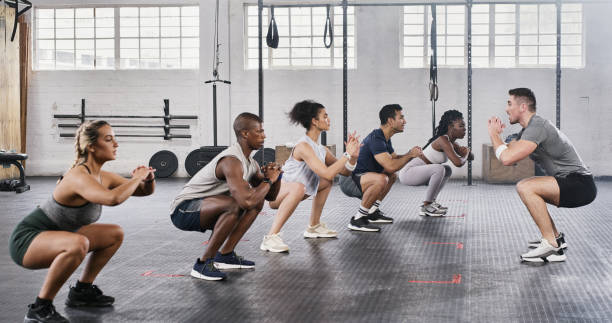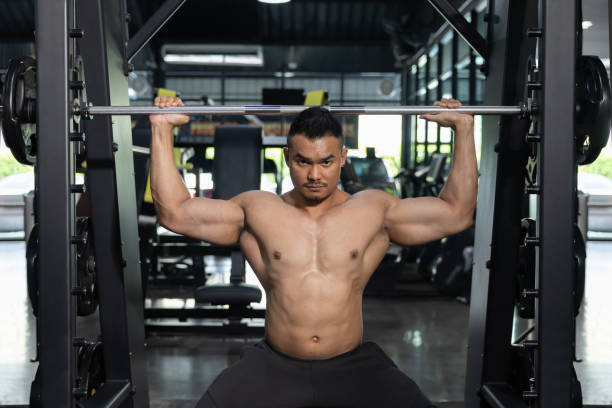
Introduction
Hack squats are exercise that can be great for your legs and glutes. However, they can also be pretty tough on your knees. Hack squats are a compound movement, meaning they work multiple muscle groups at once. While this can be awesome for building strength and improving your overall fitness, it also puts a lot of pressure on your knees. So, while hack squats can be a good thing for your workout routine, it’s important to be careful and ensure you’re doing them properly to avoid knee injuries. Let’s dive in and explore this topic together so you can better understand the pros and cons of hack squats!
Understanding Hack Squats
Correct Exercise Selection
Simply put, the hack squat is a barbell exercise that isolates your leg muscles by supporting and lifting the barbell on your shoulders. It is perfect for anyone who wants to strengthen their legs, thighs, and ankles to help them when performing daily activities. It favors people who cannot perform other squat variations due to mobility problems.
How to Perform the Hack Squat with Perfect Form
Before performing a hack squat, you must understand how to maintain a correct form during the exercise. Start by selecting the right weight that you can control throughout the movement. When you approach the front barbell squat first, place your feet shoulder-width apart, ensuring your toes are pointing forward. Keep your chest out and shoulders pulled back while maintaining an upright posture. As you lower your body, focus on keeping your knees behind your toes and engage your core muscles for stability. Then, drive your body upward to reach your starting position. Remember to breathe in as you lower your body and breathe out as you push it upward.

Need for Specific Equipment in Hack Squats
Unlike other leg exercises, hack squats require specific equipment like a hack squat machine or barbell. If you use a hack squat machine, you must adjust the machine plates to add resistance. On the other hand, if you select a hack squat barbell, you will need to place the barbell behind your body and then squat. Whatever option you choose, having someone around to spot you is essential, especially when using free weights.
Hack Squats and Knee Health
They’re a exercise people do to strengthen and ton their legs. But some people have been wondering if they’re bad for the knees. Hack Squats can be great for your leg muscles, but they can also put a lot of pressure on your knee joints if you’re not careful. That’s why ensuring you’re doing them correctly and not overdoing them is essential. If you have knee pain or problems, you should talk to your doctor or a fitness expert before trying Hack Squats. Be safe and have fun exploring different ways to keep your body healthy and strong!

Making Hack Squats Safe for Knees
Tip 1: Position Yourself Correctly
Before you exercise, it’s important to ensure you’re in the right position. To do hack squats safely, position yourself correctly by standing with your feet shoulder-width apart and your toes pointing slightly outward. Next, hold the weight behind lower back of your legs with your hands. This will help you balance your body while you do the squat.
Tip 2: Maintain Proper Body Posture
In addition to positioning yourself correctly, it’s important to maintain proper body posture while doing hack squats. To do this, keep your back straight and your head up. Focus on keeping your shoulders and hips in line with each other as you lower your upper body down. This will help distribute the weight evenly across your legs and prevent unnecessary pressure on your knees.
Tip 3: Choose the Right Shoes
The shoes you wear can also make a difference when it comes to protecting your knees during hack squats. Choose a pair of shoes that offer good support and stability, with a firm sole and a snug fit. Avoid any heels or shoes with a lot of cushioning, as they can reduce your stability and increase the stress on your knees.
Enhancing Safety and Efficiency in Free Weight Lifting
Have you ever heard of knee wraps? They’re like mini-ace bandages for your knees when you’re lifting weights. When you do free weight squats, which means you’re squatting with weights that aren’t attached to a machine, sometimes your knees need a little extra support. The knee wraps keep your knees stable and help prevent injury. Oh, and another thing to know is that some people like to do squats with a narrow stance, which means your feet are closer together than when you stand normally. This can help target different muscles in your legs.
Importance of Foot Placement in Hack Squats
You see, how your feet are positioned can greatly impact the safety of your knees during this exercise. Positioning your feet too close together or too far apart can put unnecessary stress on your knees and increase your risk of injury. But don’t worry! There’s an easy fix to this. All you have to do is adjust your foot placement so that your feet are shoulder-width apart and the point of your toes are slightly turned out. This will ensure that you engage the right muscles and keep your knees safe. So always remember, proper foot placement is key to a safe and effective hack squat.
Comparing Hack Squats with Other Exercises
For those working on their lower body, the hack squat and the leg press are two popular exercises. While both exercises focus on strengthening the legs, they are quite different in execution. The hack squat is performed with a barbell behind the body, while the leg press involves pressing weight away from the feet. It’s important to understand which one is safer for your knees. Recent studies suggest that both exercises are generally safe, but the leg press may put more pressure on the knees than the hack squat. Always consult with a teacher or coach before trying these exercises and use proper form to prevent knee injury yourself.
Advantages of Including Hack Squats in Your Workout Routine
We will explain the advantages of including hack squats in your workout and training routine so that you can add this exercise to your leg day workouts.
1. Provides a Great Pump and Muscle Hypertrophy
One of the primary benefits of hack squats is that they provide a great pump to your quads, hamstrings, and glutes, promoting muscle growth and hypertrophy. The hack squat is a compound exercise that engages multiple muscle groups, unlike isolation exercises, such as leg extensions and hamstring curls, which focus on a single muscle group. Hack squats also require more effort and energy, which can help you burn more calories and promote cardiovascular health.
2. Small Injury Risk Associated with Properly Performed Hack Squats
Hack squats can be performed with different types of equipment, such as a squat machine or a barbell, which provides more stability and control, minimizing the risk of injury. Moreover, proper form and technique are crucial to avoid injuries like strains and sprains. Always warm up your muscles and joints, and start with light weights before progressing to heavier loads. Always listen to your body, and do not push yourself with too much weight too hard, especially if you are a beginner.

3. Is the Hack Squat Necessary for a Complete Leg Day Exercise Program?
While hack squats can be beneficial to your leg-day workout, they are not essential to a comprehensive leg-day exercise program. Leg day workouts should incorporate various exercises that target all the muscle groups in your lower body, such as squats, lunges, deadlifts, leg presses, calf raises, and glute bridges. Combining different exercises can challenge your muscles from different angles, promoting muscle growth, strength, and endurance.
Conclusion
In conclusion, we’ve discussed the safety of hack squat properly and squats for your knees. It’s important to remember that any exercise done improperly can be harmful. But with the proper form and technique, hack squats can effectively strengthen our legs and glutes. Remember to keep your knees aligned with your toes, keep your back straight, and go at a comfortable pace to ensure you’re doing it right. Feel free to start with lighter weights and gradually work your way up.


Leave a Reply